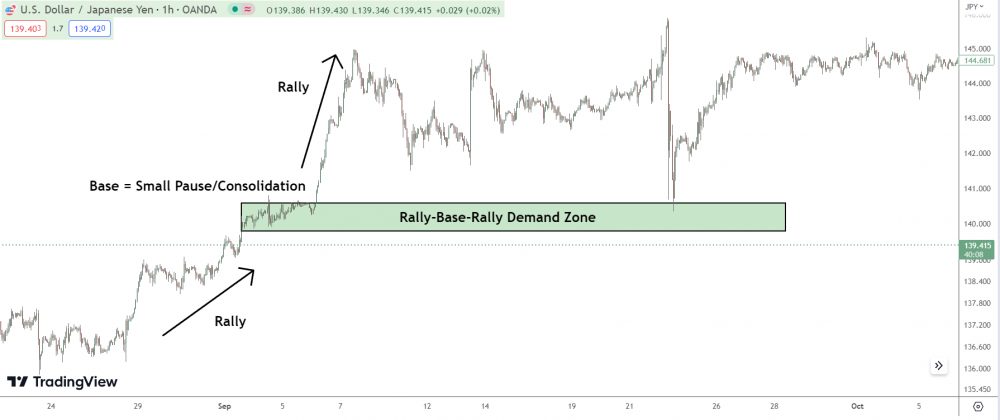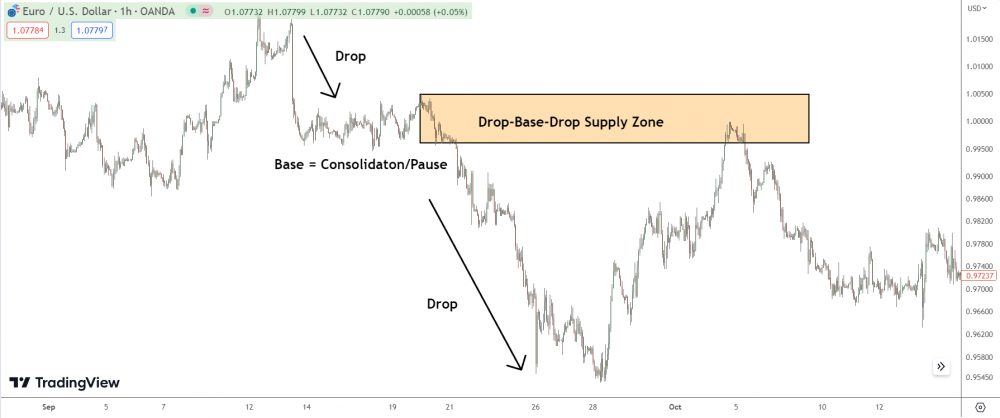So, “Rally, Base, Rally” and “Drop, Base, Drop” are two essential concepts in supply and demand trading.
Let’s break them down.
Starting with “Rally, Base, Rally” (RBR).

This is a pattern that forms a demand zone in the market.
In layman’s terms, it’s a sign that the price is likely to go up. Here’s how it plays out: firstly, we see a rally – a strong upward price movement.
Next, the market enters a consolidation phase, which we call the base.
Finally, another rally ensues, often with even more power.
This action forms a demand zone, which is where buyers have previously taken control of the market and pushed prices higher. The base is where institutional buyers have loaded up on their positions, making it a hotbed of demand.
If price revisits this area, these buyers often step in again, making it a great spot for a potential long trade.
On the flip side, we’ve got “Drop, Base, Drop” (DBD).

This is basically the mirror image of RBR and represents a supply zone in the market.
The DBD starts with a price drop, then enters a base or consolidation period, and ends with another drop. Again, the base represents an area where institutional sellers have offloaded their positions. If price retraces back to this zone, it’s likely these sellers will re-emerge, making it a potential area for a short trade.
Understanding these two patterns can give you powerful insights into where major market players may drive the price, offering fantastic trading opportunities.
But remember, always use these in conjunction with other analysis methods to increase your odds!